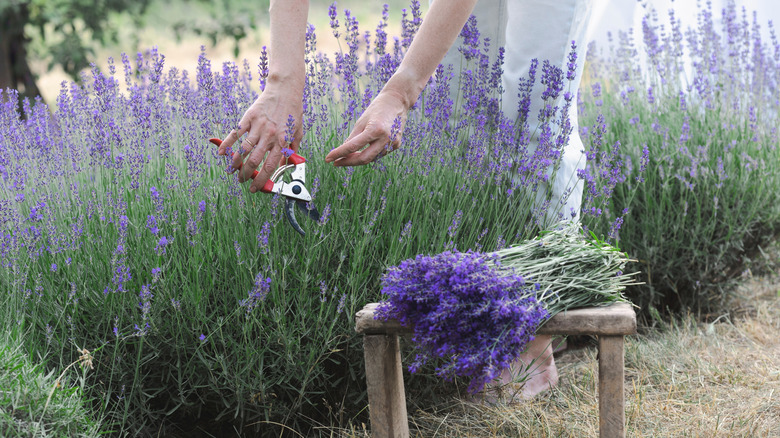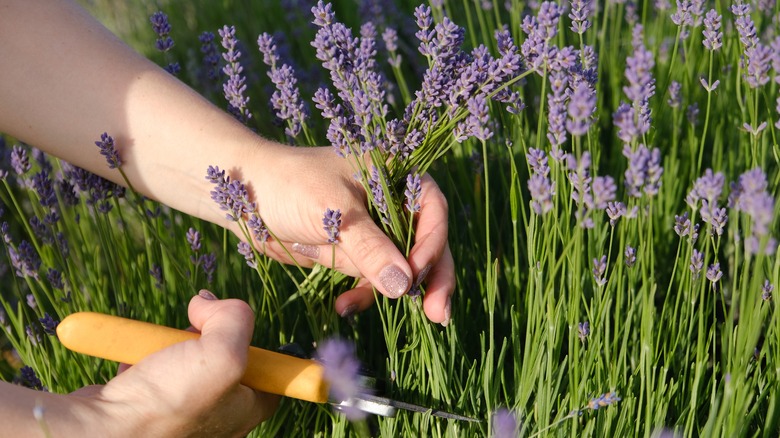Why Timing Is Key When Pruning Lavender Plants To Get Blooms That Last
Lavender (Lavandula angustifolia) can provide pretty purple blooms and a sweet, calming fragrance to any garden. But once you've enjoyed your sweet-smelling plant all summer, when should you prune it to make sure you get the longest-lasting flowers in the future? The answer is that you should lightly trim lavender right after the flowers fade.
Many varieties of this bushy perennial thrive in USDA Plant Hardiness Zones 5 through 9, and will do well either in the ground or in containers. Pruning can be an important strategy to take care of lavender plants for two important reasons: To help encourage new growth and blooms and to help prevent fungal infections like leaf spot. It's also not a bad way to keep the plant looking pretty in your garden, either.
If you want your lavender to be healthy, then get out those pruning shears after the flowers have wilted and gone, usually in late summer. The exact time could depend on the kind of lavender you have, since different varieties might finish flowering at different times. Only make cuts well before the first frost sets in. Pruning encourages new growth, but if lavender doesn't have time for new growth to establish itself before the cold moves in, it's all for naught. If summer slips by you, and you find yourself with a not-yet-trimmed lavender plant, fear not. You can still do a bit of pruning in fall, as long as the first frost is at least a month and a half away.
Here's how to prune lavender
Once you're ready to prune, first make sure that your garden shears are clean and sharpened. Then, you can start by cutting off any dead bits. Try trimming back the plant back to about a third or half its size. Err on the side of doing less pruning when in doubt, since slicing down a lavender shrub to its base could kill it. Don't cut the woody stems below leaf growth. If you do, those stems likely won't grow back.
Some people prefer precision shaping their lavender like a shrub, molding the plants into dome-like balls. This method can be fairly resilient — so as long as you don't cut away too much of the healthy branches, you can shape it the way you'd like. Just remember that it's better to routinely shape new growth rather than hard cuts.
After you put away the shears, give your lavender plant a nice drink of water. You can also do a little pruning in the spring when green buds and leaves begin to appear, but keep your shears focused on ridding the plant of dead stems. Another way to keep lavender healthy and blooming could be to add pea gravel around the plant — it's a simple soil addition you can easily mix in that will help water drain. If you take good care of your lavender plant, it could last 15 years!

